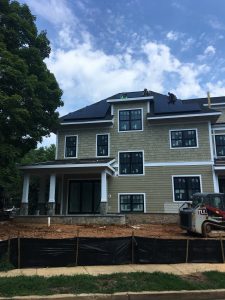Solar panel installation in Northern VA, DC, and Maryland provides an environmentally-friendly renewable energy source, significant financial incentives, and tax credits. Even with all of these benefits, switching over to solar energy for your home takes careful planning and review of various factors to determine if solar is right for you. One common consideration for many people is how much of their home can actually be powered by solar energy. Below, we discuss how much of your home can be operated by solar.

The Basics of Solar Panel Installation in Northern VA, DC and Maryland:
It is possible to run your entire home on solar-powered energy. The lights and appliances in every room can be powered completely by solar instead of standard electricity. However, this depends on the solar potential of your property. Before deciding what portion of the home can be powered through solar energy, assessments need to be made. Some areas in the region receive more sun than others, so it’s important to investigate this potential how much solar energy you will receive, and how much you must rely on electricity. Here’s how to decide the solar potential of one’s home:
- Mapping out a home’s potential: The U.S. Department of Energy provides an array of mapping resources for gathering a better understanding of solar installation. These mapping resources provide ways to see potential savings from solar installation, solar potential, underlying solar resources, and more.
- Assess shade: Large trees can block the sun’s rays from hitting solar panels. This is especially true as trees grow throughout the years. Your chosen solar providers in Northern VA, DC, and Maryland should have a good understanding of native foliage and shade potential in order to prevent this from occurring. Our experts at Prospect Solar are more than happy to help you assess shade blockage and determine how much solar power can reach your home
- Check your roof and local homeowners association guidelines: If one’s roof needs repairs within the next couple of years, it is wise to do that before installing solar panels. Additionally, some homeowners associations have varying restrictions on solar installation. Check these guidelines before finding a solar provider in the D.C. metro area.
- Roof and land space: How much solar power your home receives will also depend on how many solar panels your property can accommodate. If you have limited roof space, a ground-mounted system may allow you to install more panels and therefore have more solar energy to power your home, and less reliance on standard electricity. For a home that has limited roof space and limited yard space, however, the amount of solar energy collected will likely be less.
The Next Step: Contact Prospect Solar!
After assessing home solar potential, it is easier to understand how much of your home can be powered through solar energy, and how much you will still need to rely on standard electricity. As the experts of solar panel installation in the D.C. metro area, Prospect Solar is adept at understanding the energy needs of your home. We offer solar panel installation in Northern Virginia, DC, Maryland, and beyond.
In addition to our installation services and equipment knowledge, we aim to educate our clients on the overall benefits of solar, potential payment plans for the installation and management of solar energy, solar equipment basics, and financial incentives/tax breaks from switching to solar energy. We offer both residential and commercial solar panel installation and install solar panels for open-air land plots such as farms and wineries.
Are you considering switching to solar? We can help you understand your solar potential. Contact us to get started.